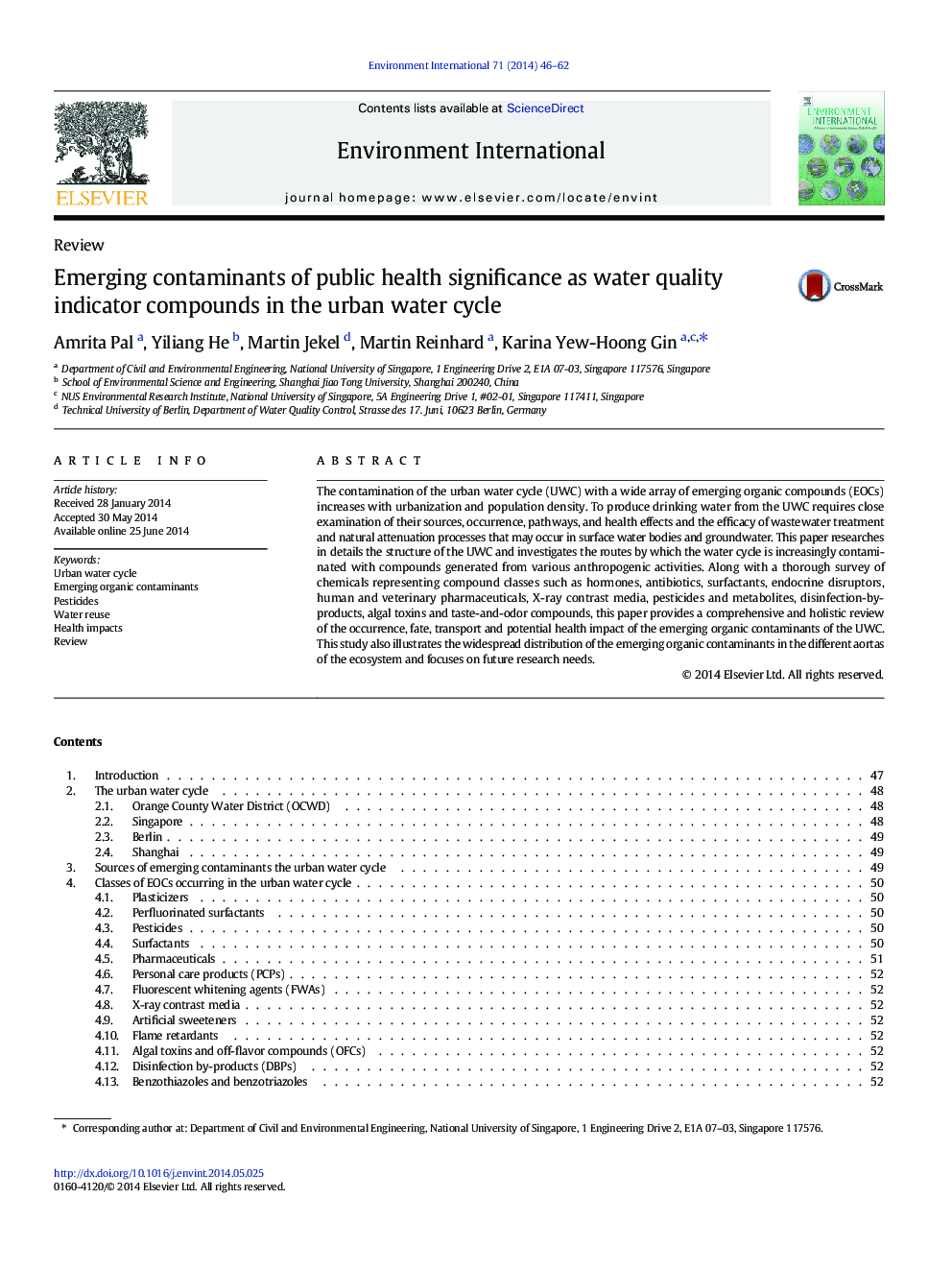| Article ID | Journal | Published Year | Pages | File Type |
|---|---|---|---|---|
| 4422764 | Environment International | 2014 | 17 Pages |
•Flow in urban water cycle (UWC) is dominated by consumption and effluent discharge.•Four characteristic UWCs are compared Orange County, Singapore, Berlin, Shanghai.•Emerging organic contaminant (EOC)s occurring in the UWCs are categorized.•Sources and efficacy of treatment plants and natural attenuation govern health risks.•Integrating natural attenuation into UWCs play significant role for EOC removal.
The contamination of the urban water cycle (UWC) with a wide array of emerging organic compounds (EOCs) increases with urbanization and population density. To produce drinking water from the UWC requires close examination of their sources, occurrence, pathways, and health effects and the efficacy of wastewater treatment and natural attenuation processes that may occur in surface water bodies and groundwater. This paper researches in details the structure of the UWC and investigates the routes by which the water cycle is increasingly contaminated with compounds generated from various anthropogenic activities. Along with a thorough survey of chemicals representing compound classes such as hormones, antibiotics, surfactants, endocrine disruptors, human and veterinary pharmaceuticals, X-ray contrast media, pesticides and metabolites, disinfection-by-products, algal toxins and taste-and-odor compounds, this paper provides a comprehensive and holistic review of the occurrence, fate, transport and potential health impact of the emerging organic contaminants of the UWC. This study also illustrates the widespread distribution of the emerging organic contaminants in the different aortas of the ecosystem and focuses on future research needs.
Graphical abstractFigure optionsDownload full-size imageDownload as PowerPoint slide
